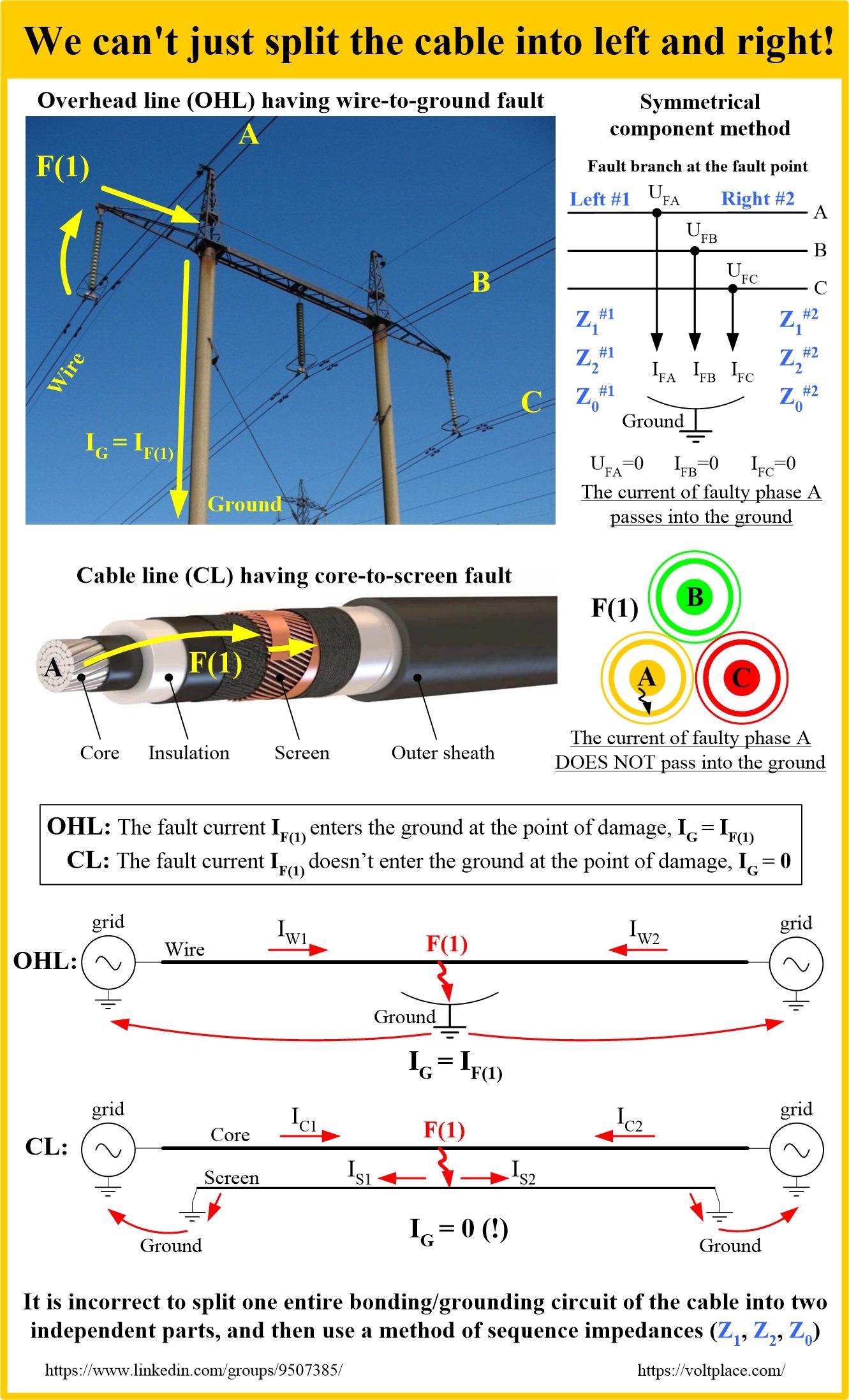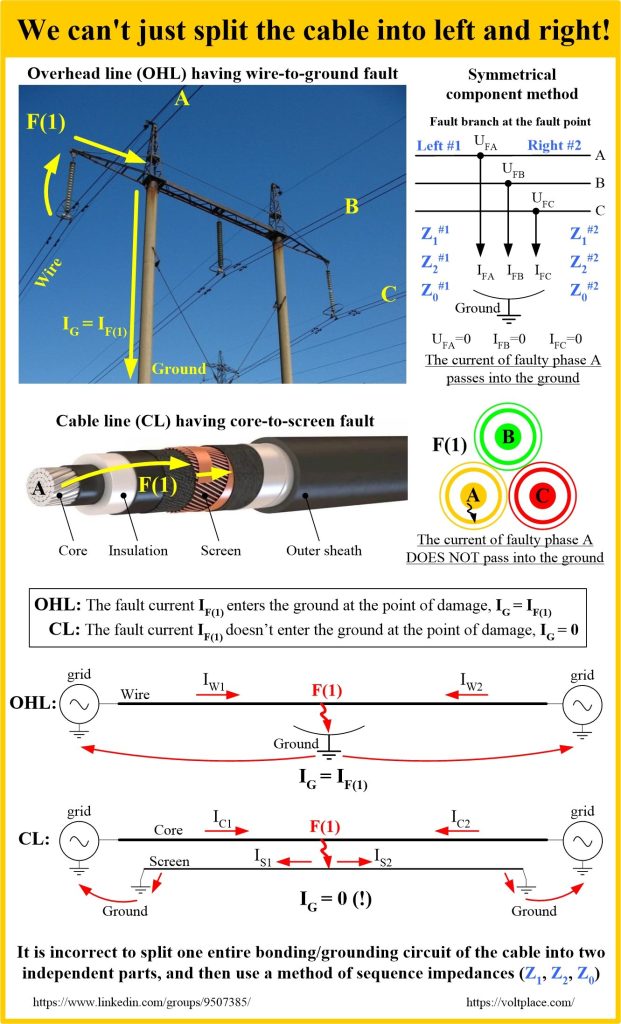
Cable line calculations in case of short circuit
The method of symmetrical components is used to calculate the normal and emergency modes of the electric network. The method represents an any mode (even asymmetric) as a composition of three separate symmetrical ones:
✅ Positive sequence “1”.
✅ Negative sequence “2”.
✅ Zero sequence “0”.
To use the method, it is important that the longitudinal impedances Z1, Z2, Z0 are known for each element of the network (generator, transformer, line). Let us focus on the lines.

For overhead lines (OHL), the formulae for calculating Z1, Z2, Z0 are well known, they are simple. For cable lines (CL), the formulae are also known, but they are rarely simple, since Z1, Z2, Z0 of CL depend on a large number of factors (according to part 2 of the book):
✅ Core cross-section and its material.
✅ Screen cross-section and its material.
✅ Screen bonding/grounding type.
✅ The distance between the phases A,B,C.
✅ The distance between the circuits.
✅ Cable armour and its features.
Let us assume that we need to calculate the short circuit current, in case of single-phase-to-ground fault F(1) appeared exactly in the middle of the line (OHL or CL), in the grid with the grounded neutral. Then, according to the symmetric components’ method, we must use two sets of impedances (left and right), which we will then combine in series/parallel, depending on the type of fault:
1️⃣ Left section of the line has 0.5*Z1, 0.5*Z2, 0.5*Z0.
2️⃣ Right section of the line has 0.5*Z1, 0.5*Z2, 0.5*Z0.
So, knowing the impedances Z1, Z2, Z0 of the entire line, we can find impedances to the left and right of the fault point, using the length of the left and right sections. Is everything correct? YES and NO!
YES – for OHL. All pylons/towers are grounded in approximately the same way, and have the same grounding impedance. That is, each span of the line represents itself, and does not depend on neighbouring spans. Therefore, OHL can be easily divided into left and right sections. In other words, OHL behaves as a homogeneous line.
NO – for CL. Cable screens in most cases are bonded/grounded only at the ends of the line. Selected screen grounding type is applied to the entire CL under consideration. Dividing CL into left and right sections breaks the original screen grounding type, and therefore we need to think carefully about impedances of left and right sections. Perhaps they can no longer be calculated by simply taking one or another fraction of the impedances Z1, Z2, Z0 of the entire CL. In other words, CL doesn’t behave as a homogeneous line.
Let us look at the flow pattern of the currents. The current from the CL core through the damaged insulation goes into the screen, and then it does not go into the ground (as is typical for OHL having many grounded towers), but goes along the CL’s screens to the left and right, and exits into the ground only at the ends of CL. If the entire CL had a both-side grounding of the screens, then after dividing the line into left and right sections, each of these sections definitely does not have a both-side grounding. Then how to calculate the impedances of the left and right sections of CL?
This issue is relevant because for screened cables, insulation breakdown usually does not break the outer sheath, that is, there is no current exit to the ground at the point of damage. For this reason, the well known method of symmetrical components may not be completely correct, giving errors that are especially noticeable for long cable lines, which look homogeneous, but in fact they are not (since they have only 1-2 screen grounding points).
